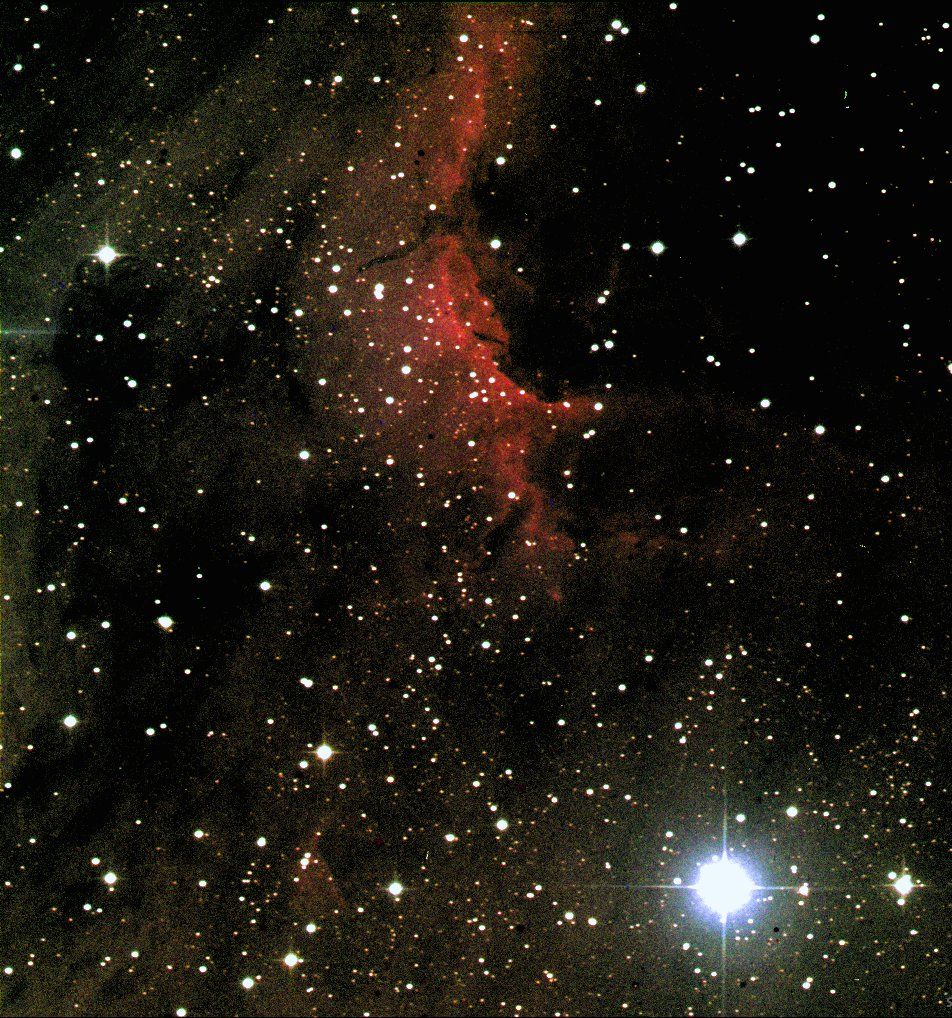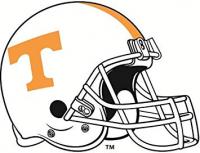The Pelican Nebula (IC 5070) Captured 12 June 2016
The Pelican Nebula is in the constellation Cygnus (The Swan). Although it adorns our night sky, it is a healthy 2000 light years in the distance. It is roughly 30 light years wide. As nebulae go, that is on the smaller side. Remember, though, that our solar system is only between .0006 and .0009 light years across, depending on where you draw its boundaries, so the Pelican Nebula is between 32,000 and 50,000 times larger than our solar system. It certainly is a mammoth celestial object in relative terms. It was discovered in 1899 by Reverend Thomas Espin. The Pelican Nebula is a nextdoor neighbor to the larger North American Nebula. The two nebulae are separated by a large cloud of interstellar dust.
There are four categories of nebulae: 1. Diffuse Nebulae, 2. Dark Nebulae, 3. Supernova Remanent Nebulae and 4. Planetary Nebulae. If visible from Earth, all of the nebulae except the Dark Nebulae either produce their own light or reflect the light of other objects, mainly individual stars, star clusters and galaxies. The Pelican Nebula is an emission nebula. It produces its own light mainly from the ionization of hydrogen and helium, but it also contains oxygen, nitrogen and sulphur, which ionize and emit light according to their ionization profiles. Let's not forget to mention dust. It is a major component of the Pelican Nebula.
The Pelican Nebula is an easy bake oven for new stars. It receives a great deal of scientific interest because it is an area of active star formation and evolving gas clouds. Gravity is constantly at work here, pulling together matter until it becomes dense enough and hot enough to form stars. As new stars form, they excite the gases, further fueling ionization and light emission. Instead of my "easy bake oven" allusion, scientists use the not too much more scientific term star nurseries for nebulae that are fertile environments for star formation.
The bright star on the upper left is HD 198931. The bright star on the lower right is HD 198639.
 |
 |
|
|||||||||||
 |
 |
||||||||||||
|
|
|
|
|
|
|
||||||||
 |
|
|
|
|
|
 |
|||||||
|
|
|
|
|||||||||||
|
|
|||||||||||||
|
|
|
|
|
|
|
|
|
|
|
|
|
|
|
Results 1 to 2 of 2
Thread: Pelican Nebula IC 5070
-
06-13-2016, 12:18 PM #1
Pelican Nebula IC 5070
Last edited by ilan; 06-14-2016 at 12:21 PM.
-
06-14-2016, 07:52 AM #2
Nice one buddy...
 I gather darkness to please me...
I gather darkness to please me...
Similar Threads
-
Picture of the Day: Cat's Eye Nebula
By ilan in forum The Universe at a GlanceReplies: 2Last Post: 05-07-2019, 06:44 PM -
Picture of the Day: Cat's Eye Nebula
By ilan in forum The Universe at a GlanceReplies: 0Last Post: 06-11-2018, 11:52 AM -
Orion Nebula, Flame Nebula, Horsehead and Running Man Nebula
By Capt.Kangaroo in forum The Universe at a GlanceReplies: 0Last Post: 03-06-2017, 06:40 AM -
Cat's Eye Nebula
By Capt.Kangaroo in forum The Universe at a GlanceReplies: 1Last Post: 01-30-2017, 06:00 PM -
Pelican Nebula IC 5070
By Capt.Kangaroo in forum The Universe at a GlanceReplies: 0Last Post: 11-19-2016, 05:20 AM







 Reply With Quote
Reply With Quote
